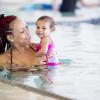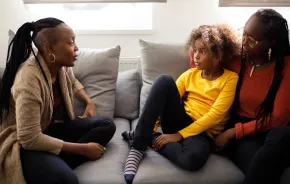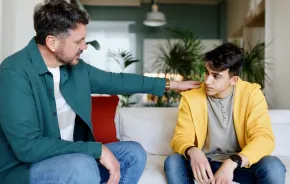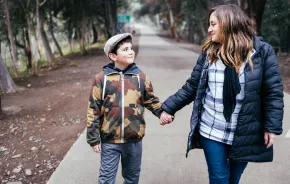
My first mistake was an obvious one: out alone after dark. I had met some friends for an evening jog and we’d split ways at the corner, just a few short blocks from my home in a “very safe” neighborhood. My second mistake was being out alone after dark with a dead phone. A bit of forethought would have prevented that one. A third lapse in cautiousness could have led to my death, which is the very reason I’m writing this article.
When I heard his footsteps, I assumed it was another jogger and made room for him to pass me. Suddenly, I was grabbed by the sides with such force that I was spun around to turn and face my attacker. Time slowed. My brain scrambled to make sense of what was happening, and that’s when I saw the ski mask. Two crude holes revealed the man’s smiling eyes, and I understood. I knew what was going to happen to me next, and terror ripped through me, propelling me into action. Here is when, statistically speaking, I would have frozen. If I had, the horrors I was imagining may have very well come true. But I was lucky. I was prepared.
I screamed.
I screamed and I ran, tearing away from him, bolting toward the nearest house. He caught up to me and tried to cover my mouth but again I pulled away, crying for help as I went. By the time I made it to the door, the man turned and ran in the direction he’d come from. The first house I ran to was under construction, but I found safety in the second. The police were called and the nightmare was over.
“How did you know what to do?” was the question every girl in my school asked when they heard. At first I had a hard time understanding the question.
How did I know? It was obvious! When someone tries to abduct you, scream and run. Seems pretty basic to me. The reaction had been drilled into me since I was little. My parents have discussed self-defense with me for as long as I can remember, so when the time came my reaction was practically an instinct. As word of the incident spread, I began having more and more conversations with my friends about assault and victimization. As I spoke to different girls, I was surprised to find how many had no idea what to do in a dangerous situation. I began to ask questions like, “what do you do if a man points a gun at your head and tells you to get in his car?” or “how do you react if you think someone is following you?” The responses proved that most teenage girls know very little about self-defense, and have spent little time thinking about it.
I slowly came to understand that the screams of a small, 17-year-old girl really are powerful enough to scare away a large, 6-foot male.
I soon realized that what my parents had done was not as common as I had assumed. I was lucky to have such open communication about these topics, which can be hard for people to discuss. In addition to self-defense techniques, my parents would talk to me about what predators look for in a victim. They explained that parking garages and public restrooms have the highest rates of abductions. They taught me how looking lost, nervous, or even distracted can highlight someone as an ideal target. Walking with purpose sends the message that you are confident and aware. Confidence, it seems, is our greatest secret weapon. The man in the mask had been counting on me to become paralyzed with fear, and because of the innumerable conversations that ensured I would not, he let me go.
In the days that followed that night, I struggled with the fear of the masked man’s return. I couldn’t fathom how I had been saved from that awful fate, and while of course I was incredibly grateful, it also confused me. I slowly came to understand that the screams of a small, 17-year-old girl really are powerful enough to scare away a large, 6-foot male. My father purchased a few bottles of Mace and we practiced spraying them outside until I felt comfortable pressing the trigger. Having the Mace made me feel stronger and my confidence grew with my understanding of how to avoid putting myself in potentially dangerous positions.
Keeping the “stranger danger” conversation going on as your kids get older is key to helping them stay safe. Discussing how to trust your gut, proper responses to different situations and being proactive in self-defense can make a crucial difference. Most sexual assaults are committed by someone you are acquainted with, which is why kids need to know they can talk to their parents, advocate for and trust themselves if they feel the slightest bit uncomfortable. As your children get older, the conversation shouldn’t stop; rather, it should evolve as challenges present themselves within each age group.
One of the hardest balances for most is finding a way to be polite without engaging with the person. People will often find themselves sharing far more than they are comfortable with because they’re afraid of being rude. In truth, "don't talk to strangers” is not something we genuinely enforce with even the youngest of children. The question should be "how do you talk to strangers?", "what should your response be?" and, "what should you make sure that your response never includes?" These conversations will bring up more questions and hopefully result in an open line of communication. There are many local and online resources that offer guidance in these areas. Offering to help your child’s school or community center to plan an event addressing these concerns can help educate your family and community. Self-defense is relevant throughout your child’s entire life, so it’s never too late to start.











